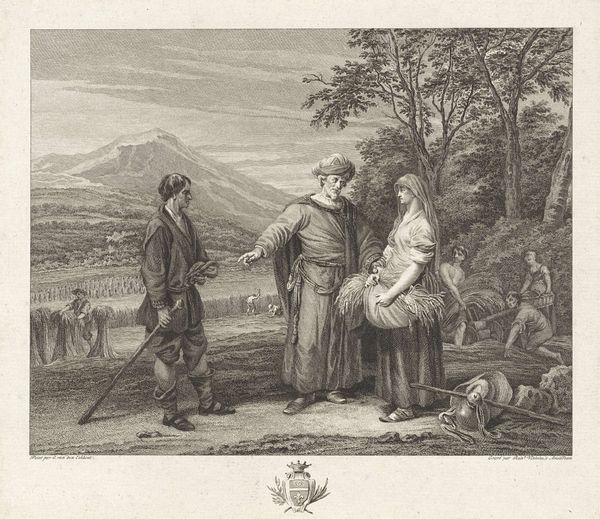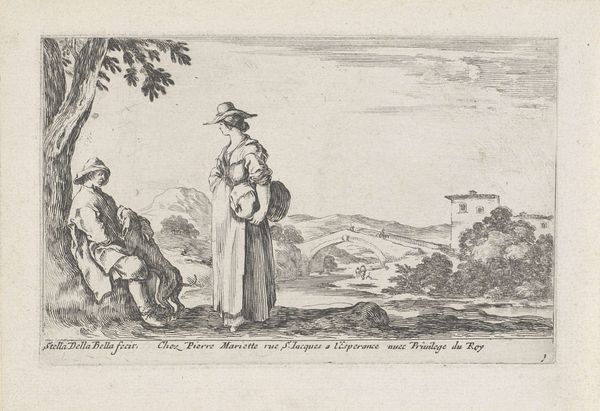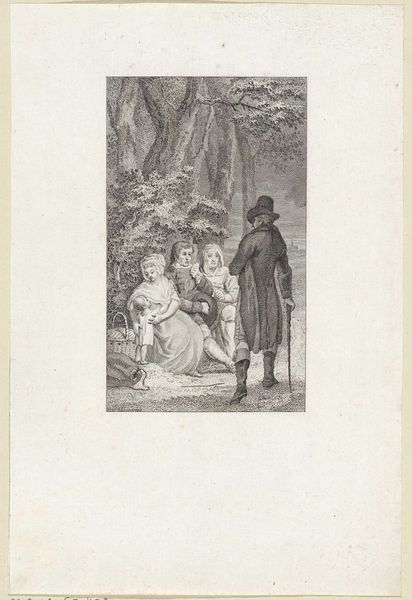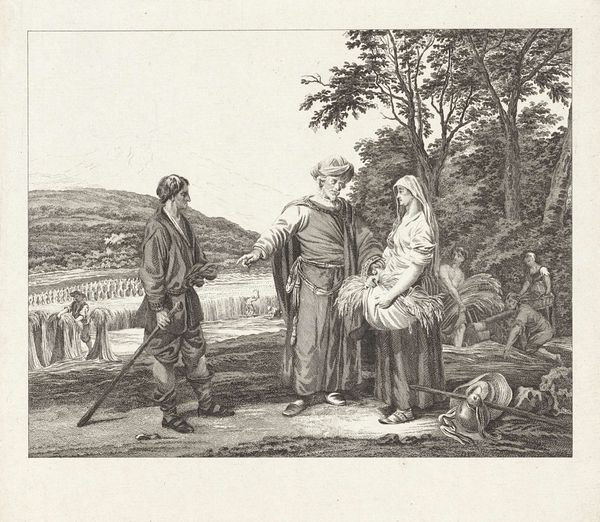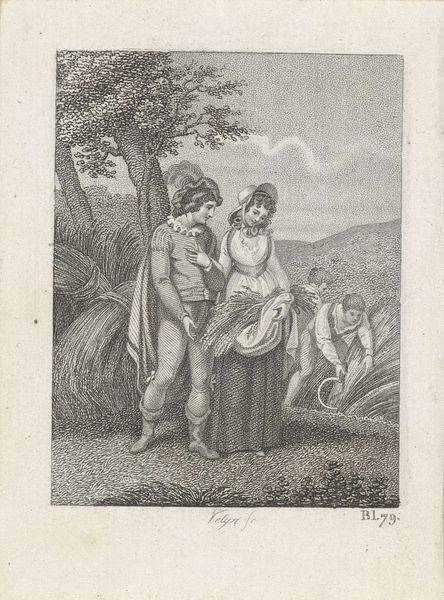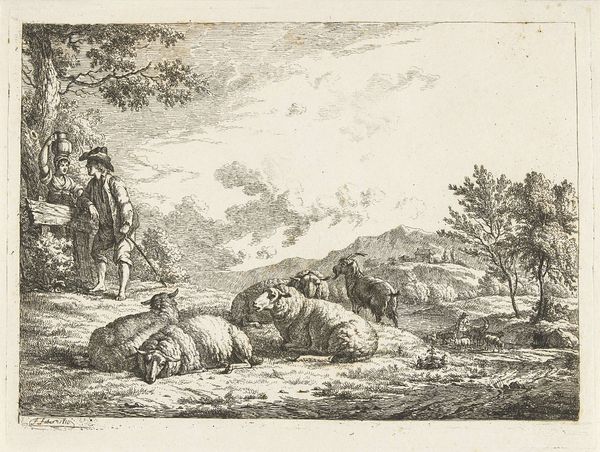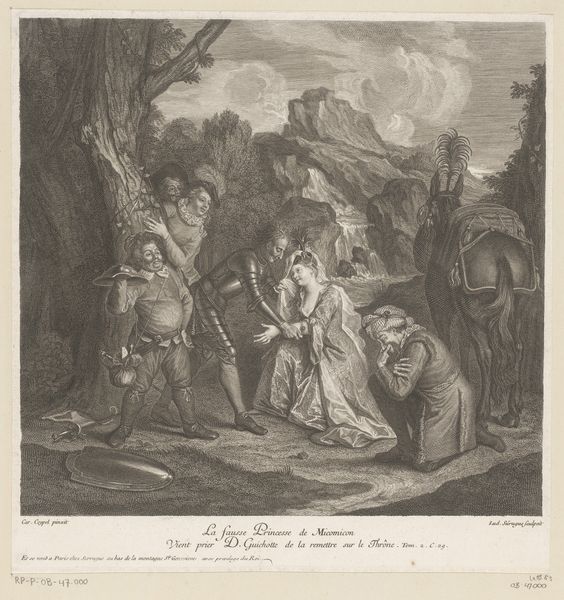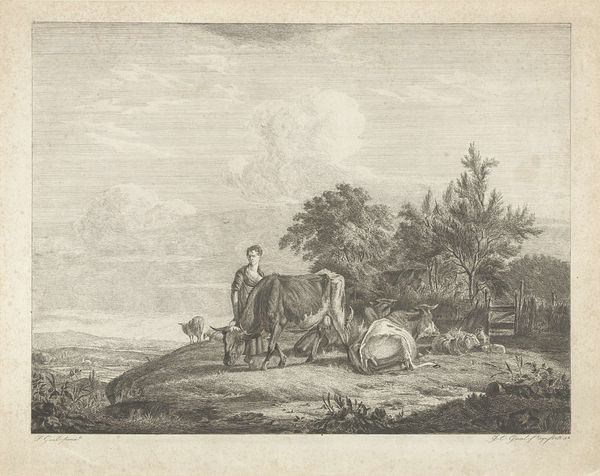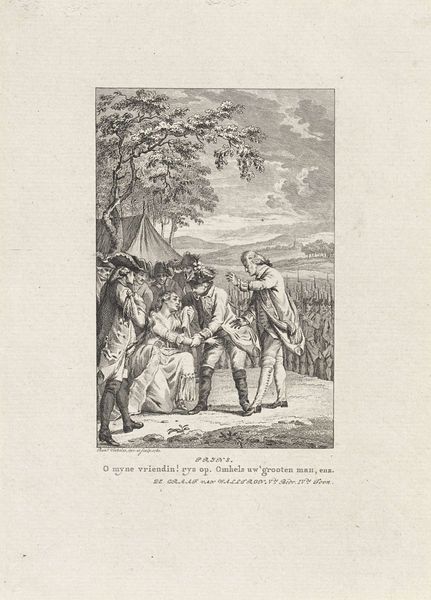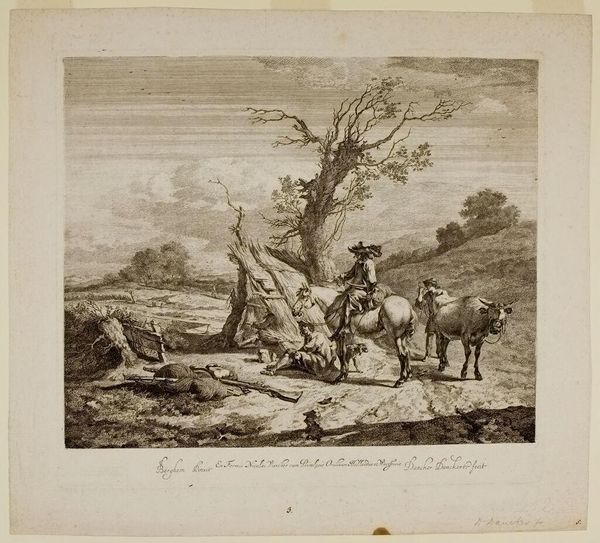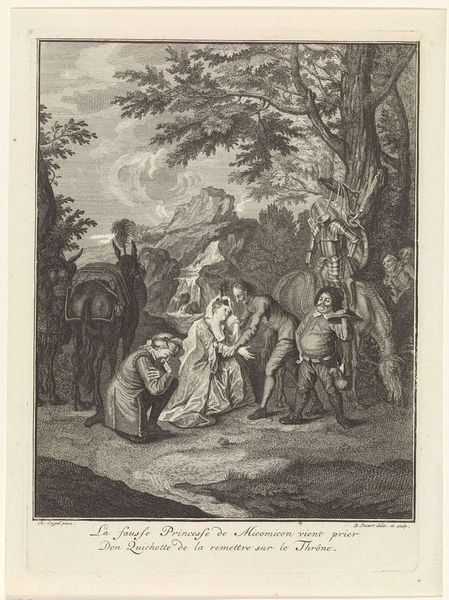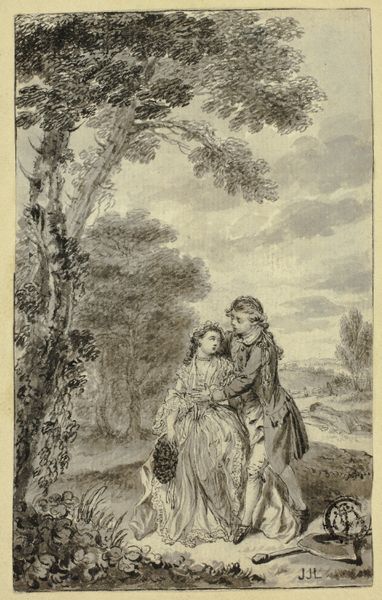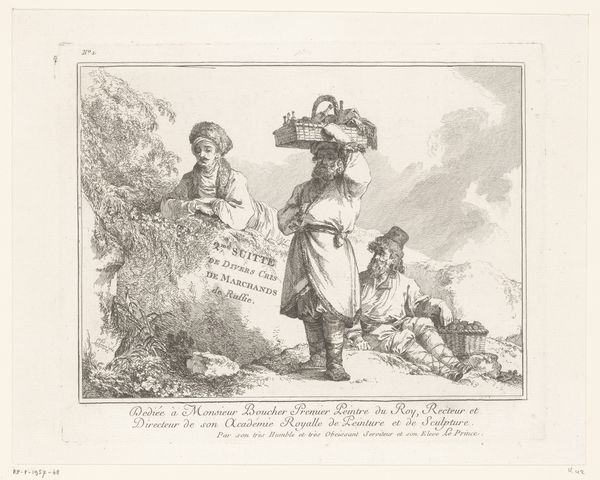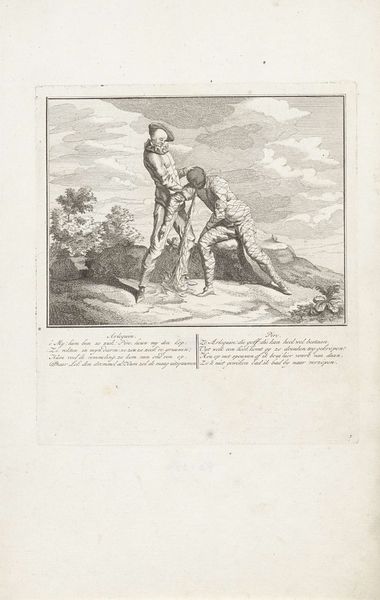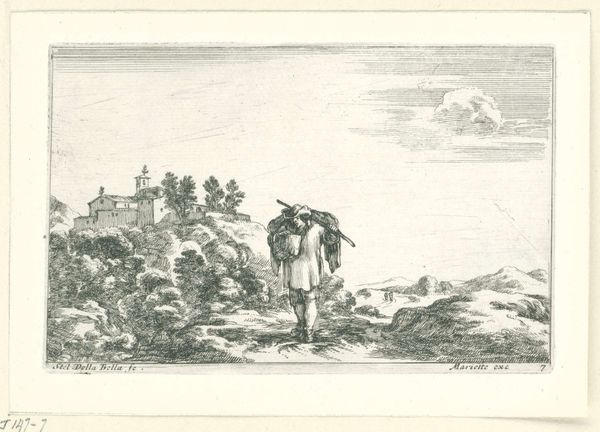
drawing, paper, pencil, engraving
#
portrait
#
drawing
#
pencil sketch
#
landscape
#
paper
#
road
#
pencil
#
genre-painting
#
engraving
#
realism
Dimensions: height 107 mm, width 148 mm
Copyright: Rijks Museum: Open Domain
Curator: This is Isaac Weissenbruch's "Poor Family Walking on a Country Road," likely created sometime between 1836 and 1912. It's a pencil drawing, possibly prepared for engraving, and currently held at the Rijksmuseum. What strikes you immediately? Editor: It’s somber, certainly. The grayscale palette enhances the feeling of hardship; their journey appears arduous. What was it like to be one of those family members who were always exposed on these travels, in all elements? Curator: That emotional weight speaks directly to Weissenbruch's grounding in realist traditions. His choice of everyday subject matter elevates the previously unexamined lives of working class families. Consider, too, the broader 19th-century context: urbanization, industrial upheaval, and its subsequent effects on the marginalized. The very act of depicting this family constitutes a potent social commentary, giving dignity to the otherwise invisible. Editor: Indeed, you can see it's the family unit that's providing structure when facing all these larger forces that might push them apart, so how is the artist representing this reality? I’m intrigued by the use of pencil and what looks to be preparation for print. There’s an inherent connection here to accessibility and reproducibility, wouldn't you agree? This suggests the intent was to disseminate the image widely, amplifying the family’s plight across social strata. Curator: Exactly. The decision to employ a medium suited for mass production transforms it into a statement about access, challenging traditional art boundaries and the elite's monopoly on visual culture. Think about how distribution shapes perceptions. Editor: Right, but what are we not seeing about the labor involved here? There is that element as well: both what is represented, this family unit surviving and traveling, and the artist's time and toil that we now simply consume without considering its value in material terms. What kind of work would be expected to pay off in that time for an artist working in the city? Curator: That kind of reading provides insight into the production networks themselves, how this artist functions as a worker inside their economic and historical moment. By turning to philosophies, like those espoused by Marx, it can expand what an artistic representation means by calling attention to value creation under duress. Editor: Seeing Weissenbruch’s drawing and examining his media helps reveal those underlying truths, wouldn't you say? To see is to start engaging. Curator: Absolutely. Understanding how "Arm gezin lopend op een landweg" intertwines medium, message, and historical circumstance allows us a better look at intersectionality itself. Editor: In the end, these quiet portraits capture the experience of work and give insight into history in unique ways.
Comments
No comments
Be the first to comment and join the conversation on the ultimate creative platform.
